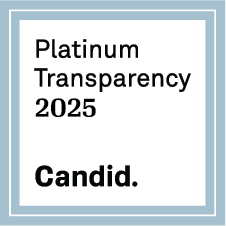OpenStreetMap and Yolanda: A Report from Manila
Posted by Kate Chapman • Dec. 5, 2013

I spent four days this week in Manila with the Global Facility for Disaster Reduction and Recovery unit of the World Bank. The impetus behind the trip was to see how the OpenStreetMap data could feed into the recovery process post Typhoon Haiyan/Yolanda. During my short-time in Manila I met with a few different groups. It was great to hear that the OpenStreetMap data was useful and that organizations would continue to appreciate it being updated. This would not be without the support of the over 1500 volunteers who have helped create data and the activation coordinators Maning Sambale, Andrew Buck and Pierre Béland. As well as the many others that played roles in other ways.
 Analysis of Recovery Needs
Analysis of Recovery Needs
The biggest need that the OpenStreetMap community can assist with related to recovery mapping is providing road information. The government has great national road base data, but smaller roads are not available for all areas. The government of the Philippines has prioritized municipalities within a 50 km buffer of the typhoon path. I analyzed the amount of roads mapped in those areas and the available imagery. The idea was to determine which places do not have much information, but then see is that because there is no imagery available, because the population there is small or some other reason?
Information Management Working Group(IMWG) Coordination Meeting
During my time in Manila I also attended the Information Management Working Group(IMWG) Coordination meeting which was convened by the United Nations of Office of Coordination of Humanitarian Affairs (UNOCHA). The meeting serves as a time to discuss data issues, what is available, and what is needed. Two of the topics of discussion related to HOT's work. The first was simply if there are areas that organizations would benefit from us focusing our mapping work. The second was if there were specific requests the volunteer technical community could assist with and a description of the types of capabilities of the Digital Humanitarian Network was given. Note: HOT is a member of the DHN. One thing I noticed while attending the meeting was the quality of MapAction maps up on the walls. MapAction provides GIS and mapping support in support of disaster response and frequently use OpenStreetMap as a base for those maps. To see further the types of maps that they have created please check out the Haiyan section of their website.
Presentation at World Bank to Government and NGO Partners
My last day in Manila both myself and Maning Sambale presented on "Participatory Mapping with OpenStreetMap for Disaster Resilience , and Community based Recovery and Reconstruction Planning." There were about 30 attendees from government, donors, NGOs and universities represented. I presented the general background on HOT as well as specific examples of projects we've worked on in Indonesia. Maning introduced the OSM Philippines community which I really enjoyed. He showed the different mappers what their professions were and why they contributed and used OSM data. I thought this was a great way to introduce OSM, looking at the individual. The presentation also went into the current response work and OSM-ph and the international community working together to help create base data.
At the beginning of the workshop everyone went around and introduced themselves. One woman stated that she didn't know why she was there and that she was simply told to go because her boss was attending another workshop. I think one of the best individual outcomes of the event was at the end she said she understood why OSM might be useful and was interested in discussing more.
Maning's slides as well as mine are available on Slideshare.
Looking Forward
State of the Map Philippines is happening this month on the 14th and 15th. Myself and three of the team from HOT Indonesia are heading up to learn and collaborate with the community there. I'm looking forward to discussing how HOT can provide continued support.







